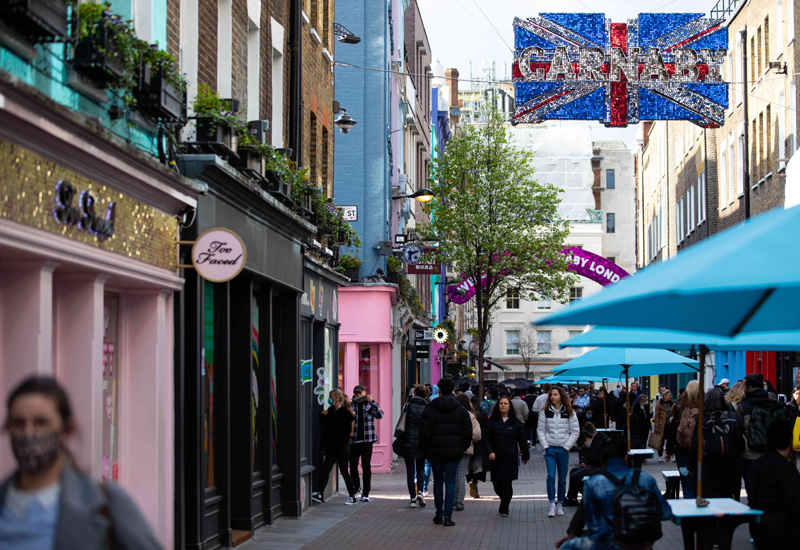As the post-lockdown boom begins to ease, retail sales growth has started to slow.
According to the British Retail Federation, on a total basis, sales increased by 3.0% in August, against a growth of 3.9% in the same month last year.
This is below the 3-month average growth of 6.9% and the 12-month average growth of 10.3%.
Reflecting on these results, the Consortium’s CEO, Helen Dickinson, said: “As post-lockdown pent-up demand has softened, the growth in retail sales we have seen over the past few months slowed for August. Nonetheless, we still saw growth above pre-pandemic levels, as people returned to stores in greater numbers. With wedding season in full swing and workers gradually returning to the office, formalwear was a strong performer.
“Additionally, the bank holiday weekend and back-to-school buzz contributed to a rise in non-food sales. While the online sales growth has begun to slow, it is still high when compared with pre-pandemic growth rates. This demonstrates how the pandemic has shifted the digital-physical shopping balance and increased the linkage between the two channels.”
Adding: “With a precarious economic backdrop and retailers grappling with higher costs across the supply chain, the Government needs to deliver on its promise to reduce the burden of business rates that are holding back investment in recovery from the pandemic.
“If not, we will see the number of shuttered stores continue to rise and more jobs lost. This will seriously impact communities right across the country, and those already most economically deprived will be hit the hardest, putting the levelling up agenda in jeopardy.”
KPMG Retail Partner Don Williams, went onto comment.
He explained: “Much like the summer weather retail performance in August was mixed. Sales growth on the high street continued to slow, with footfall still below pre-pandemic levels and online sales took a retreat from the highs of last year, whilst some discretionary non-food categories continued their recovery.
“Overall, the high street saw 3% growth, dented by lower food sales growth of 1.9% as consumers enjoyed a fully re-opened hospitality sector. Online sales fell back by -2.5% compared to August 2020, though online penetration rates remained significantly above pre-pandemic levels, signalling the step up in online shopping is here to stay.”
Adding: “With the retail recovery showing signs of slowing, the sector is expected to grow at a more muted rate as retailers face increasing challenges on a number of fronts. Inflation is expected to accelerate putting pressure on household spending, whilst retailers battle for share of wallet as consumers spend money on leisure, entertainment and travel.
“Staffing pressures remain and supply chain issues are being widely reported, with raw material shortages and challenges getting product into the UK and getting goods into customers‘ hands. This may feed into limited availability of certain products and the spectre of price rises remains.”
Concluding: “Retailers will be pinning their hopes on a more predictable normal with white collar workers returning to city centres in greater numbers from this month and a buoyant Christmas fuelled by some of the savings that consumers have made over the last 18 months of lockdown and restricted spending. Nonetheless, successful retailers will have to work very hard to ensure the right availability of the right product to satisfy the requirements of an ever more demanding customer.”

